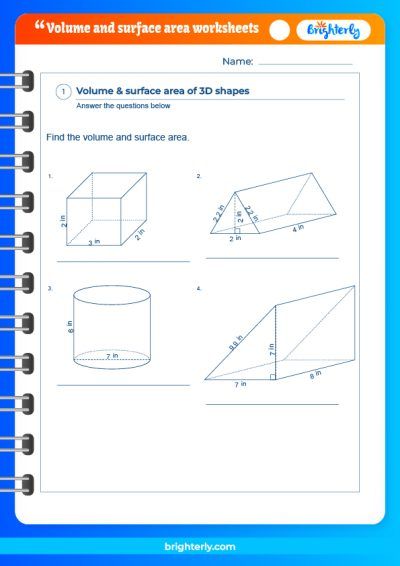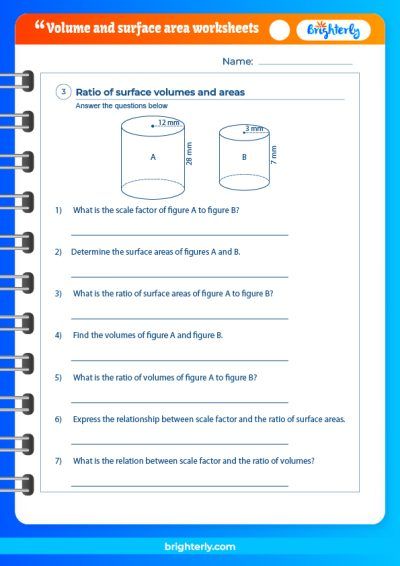Volume of Prism – Formula, Definition With Examples
Updated on January 15, 2024
Welcome to the captivating world of prisms, an essential concept in geometry that’s both fascinating and vital to everyday life. Whether your child is taking their first steps into geometry or diving into more complex mathematical ideas, understanding prisms and their properties is key. Here at Brighterly, we believe in making learning exciting and accessible. This comprehensive guide will take you through the volume of prisms, both regular and irregular, uncovering their formulas, definitions, and properties. Along the way, we’ll explore practical examples and engaging practice problems, all designed to spark curiosity and foster a love for learning. So, join us on this mathematical journey as we unravel the secrets of prisms, a cornerstone of geometry, and a doorway to endless exploration.
What Is a Prism?
A prism is a polyhedron with two parallel faces, called bases, and additional faces called lateral faces that connect the corresponding sides of the bases. Prisms are named after the shape of their bases; thus, a prism with a triangular base is called a triangular prism, a prism with a square base is a square prism, and so on. The fascinating part about prisms is that they can be found everywhere, from the architectural marvels around us to the toys children play with. Understanding the volume of prisms can unlock a whole new way to explore the world mathematically.
Definition of Regular Prism
A regular prism is a special kind of prism where the bases are regular polygons. This means that all sides of the base are equal, and all angles within the base are also equal. A common example is a cube, where every face is a square. Regular prisms are symmetrical, orderly, and often found in mathematical challenges. They have a simple elegance to them, reflecting balance and harmony, that appeals to both young learners and advanced mathematicians.
Definition of Irregular Prism
In contrast, an irregular prism has bases that are not regular polygons. The sides and angles of the base can be different from each other. Irregular prisms are more common in nature and everyday objects, such as a sloping roof or a rock formation. They may lack the symmetry of regular prisms but are no less fascinating. In fact, irregular prisms add complexity and variety, sparking curiosity in young minds at Brighterly.
Properties of Prisms
Properties of Regular Prisms
Regular prisms have a set of properties that make them unique. The main characteristics include:
- Uniformity: All the angles and sides in the base are equal.
- Symmetry: They have symmetrical shapes and often possess reflective symmetry.
- Predictable Measurements: Because of the uniformity, calculating the volume, area, and other geometric measurements is relatively easier.
Properties of Irregular Prisms
Irregular prisms also have distinct characteristics:
- Non-Uniformity: Sides and angles in the base are not necessarily equal.
- Complex Shapes: These prisms can take on a more varied and intricate appearance.
- Challenging Calculations: Measurements can be more challenging due to the lack of symmetry.
Difference Between Regular and Irregular Prisms
Regular and irregular prisms differ in symmetry, uniformity, and complexity. Regular prisms have a pleasing symmetry, while irregular prisms can have more complex and varied shapes. The difference can spark interesting classroom discussions, and children can learn to appreciate the diverse forms found in mathematics and nature.
At Brighterly, we believe that practice is the key to mastery. That’s why we invite you to explore our volume of prisms worksheets, where you can find an array of additional practice questions, complete with answers.
Formulas for the Volume of Prisms
Writing Formulas for the Volume of Regular Prisms
The formula for the volume of a regular prism is straightforward and can be expressed as:
Volume = Base Area × Height
Writing Formulas for the Volume of Irregular Prisms
Calculating the volume of an irregular prism can be more complex, but generally, the formula is the same:
Volume = Base Area × Height
The challenge lies in calculating the base area, which may require more detailed measurements and understanding of geometry.
Practice Problems on Volume of Prisms
- Calculate the volume of a cube with side length 6 cm.
- Find the volume of a triangular prism with a base area of 5 square meters and a height of 10 meters.
- Determine the volume of an irregular prism with given dimensions.
These problems can offer engaging practice and exploration for students.
Conclusion
Exploring the volume of prisms has been a delightful journey into the world of shapes and spaces. From defining what makes a prism to distinguishing between regular and irregular prisms, we’ve covered it all. Through the interactive lessons and tools at Brighterly, we strive to ignite the spark of curiosity in children and fuel their passion for learning. The mathematical concepts of prisms are more than just numbers and formulas; they’re an exciting landscape where creativity and logic unite. We hope this comprehensive guide serves as a valuable resource for both parents and educators, nurturing young minds to see the world through the lens of geometry. Join us at Brighterly, where learning shines brightly, and let’s continue this remarkable exploration together!
Frequently Asked Questions on Volume of Prisms
What is the difference between a prism and a pyramid?
A prism has two parallel bases and rectangular lateral faces connecting the bases. A pyramid, on the other hand, has one base and triangular faces that meet at a common vertex. Prisms are often used in Brighterly lessons to teach parallelism and uniformity, while pyramids introduce concepts of convergence.
How can I find the base area of an irregular prism?
To find the base area of an irregular prism, you may need to divide the base into recognizable shapes, such as triangles or rectangles, and then calculate their individual areas. Add these areas together to get the total base area. Tools at Brighterly can help children visualize and calculate this in an interactive and engaging way.
Why is understanding the volume of prisms important?
Understanding the volume of prisms is fundamental for various real-world applications such as architecture, engineering, and even in arts and crafts. It helps students connect mathematical concepts with tangible experiences. At Brighterly, we link these principles to hands-on activities and projects, making the learning process dynamic and relevant.






